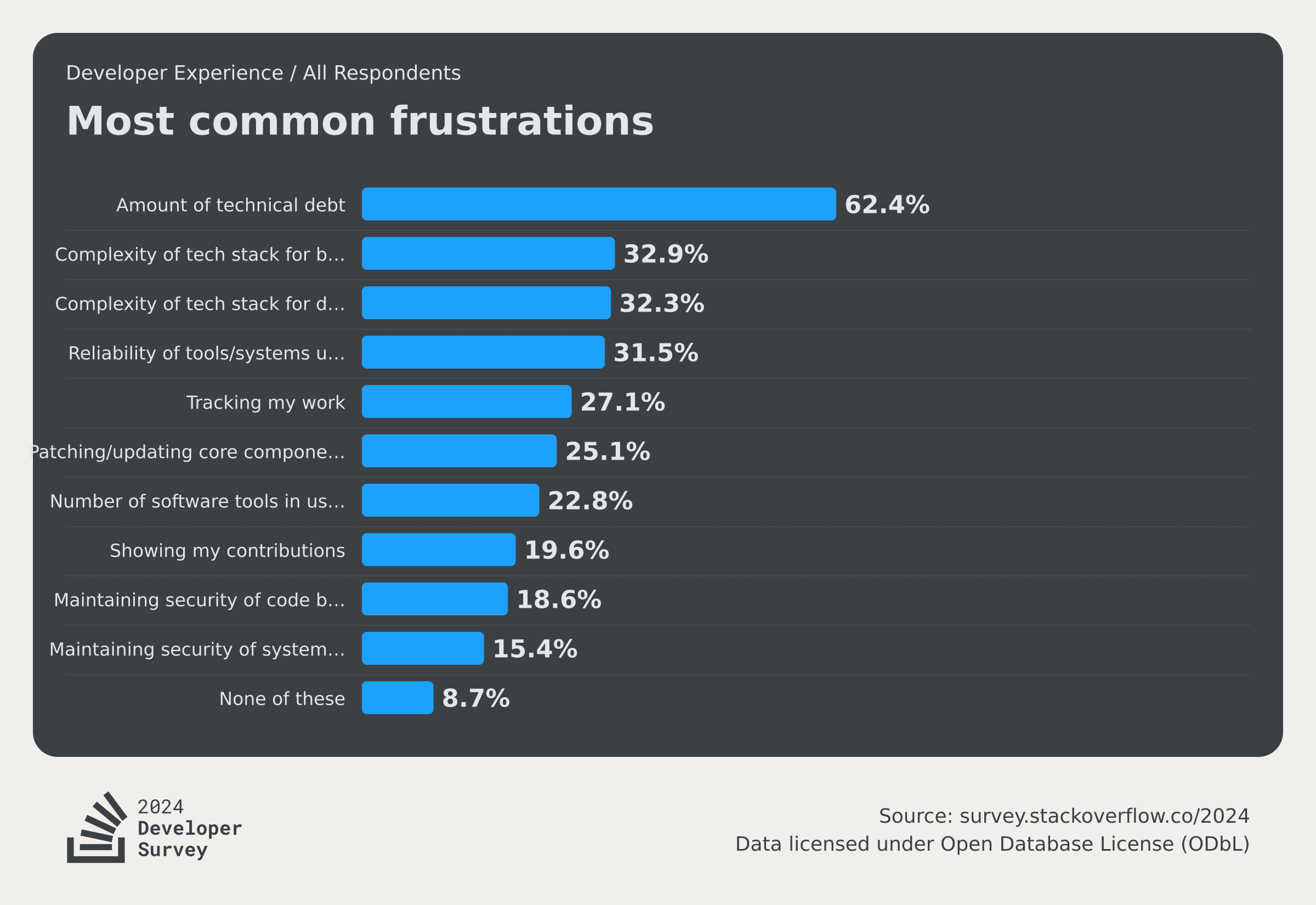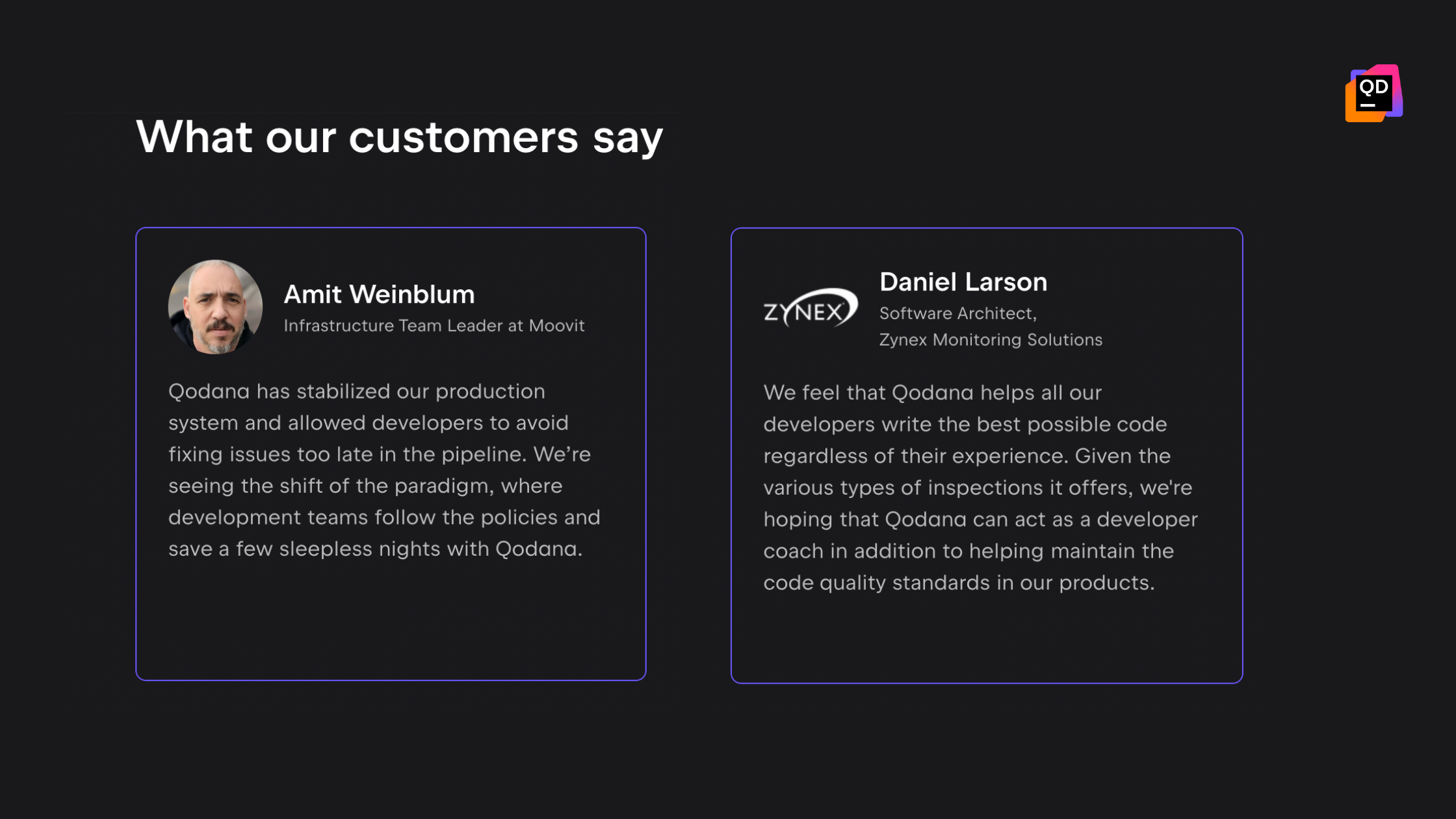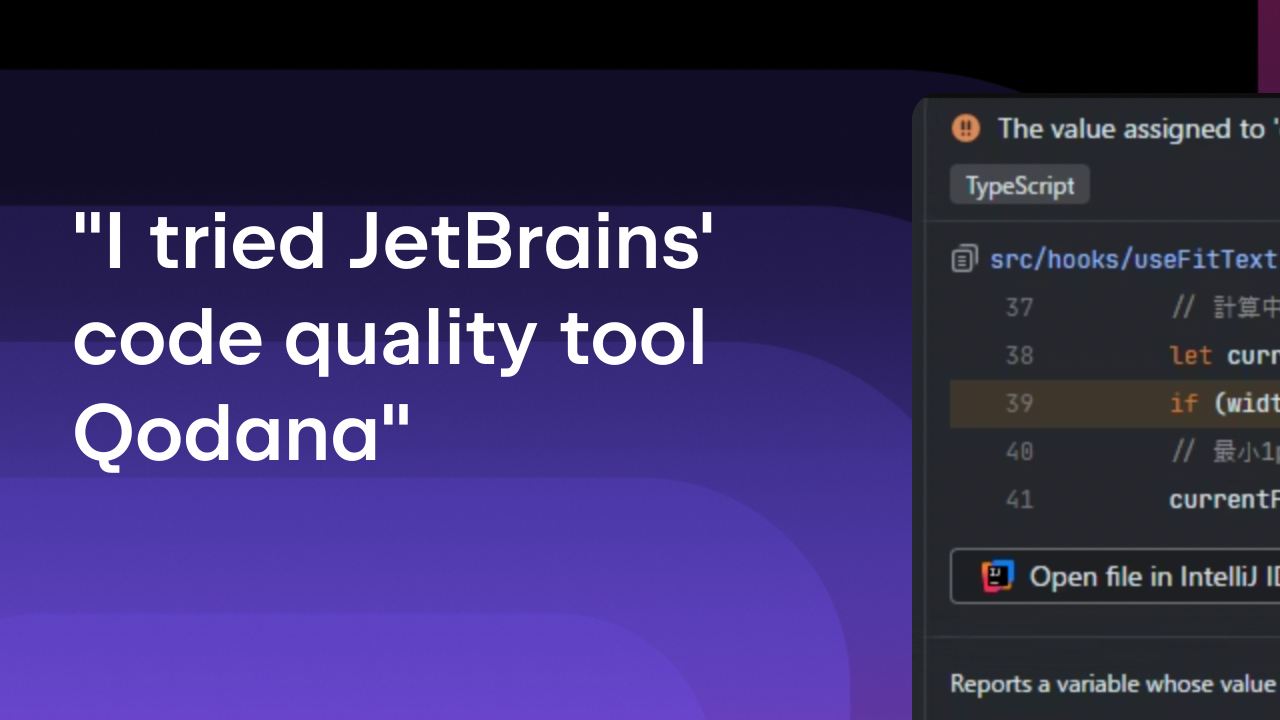Qodana
The code quality platform for teams
5 Ways Static Code Analysis Can Improve Developer Experience

Developer experience is not only about nice editors and fast build times. It is about reducing friction so developers can focus on solving problems rather than fighting with tools. Among the most effective developer experience tools available today is static code analysis. By examining code without running it, static analysis surfaces potential issues early and helps teams deliver higher-quality software, faster.
Research from Stack Overflow’s 2025 survey showed that “Public search engines are the top resource used by professional developers to find answers to technical questions. 55% use traditional search and 15% use AI-powered search, either free or paid”. But what if the tools we work in to improve code quality and security to help provide those answers with in-context learning?
This is just one of the ways that static code analysis can significantly improve developer experience. The same research found that developers had high levels of frustration with technical debt, tech stack complexity and the reliability of the tools they use – all of which we’ve taken into account when developing Qodana’s roadmap.

This research, as well as anecdotal sharing and common research findings, shows that developers have a lot of frustration in their daily workflows, so how else can static code analysis help? Today, we’re highlighting 5 ways:
1. Faster feedback loops
Waiting for a build to complete or a test suite to run slows momentum. Static code analysis integrates directly into the development environment or CI pipeline, providing almost immediate insights into potential bugs, style violations, or security vulnerabilities.
Instead of context switching between writing code and waiting for feedback, developers can fix problems as they code. Faster feedback loops shorten the distance between writing and validating, which keeps developers in the flow.
2. Reduced cognitive load
Modern systems are complex, and keeping all the rules, patterns, and security practices in mind while coding is unrealistic. Static code analysis acts as a safety net, catching violations of coding standards, identifying unsafe constructs, and reminding developers of best practices.
This reduces the mental overhead of remembering every guideline and allows developers to concentrate on design and problem solving. Over time, this makes coding less stressful and improves overall team productivity.
3. Improved code quality and consistency
Teams often struggle with inconsistent coding styles or subtle bugs that slip into production. Static code analysis enforces coding standards across the project, ensuring consistency and readability.
It can detect common error patterns like null pointer dereferences, uninitialized variables, or unused imports before they cause real issues. By automatically highlighting these concerns, static analysis tools improve the reliability of the codebase and build long term maintainability.
4. Time savings across the lifecycle
Fixing a defect after release is many times more expensive than resolving it during development. Static code analysis catches problems at the earliest stage, reducing the need for long QA cycles or emergency hotfixes – and Qodana has quick fixes.
It also helps reviewers by pre-filtering trivial issues, so code reviews can focus on architecture and logic instead of formatting or lint-level concerns. Developers spend less time on rework and more time on meaningful progress.
In some cases, like with Qodana, capability extends beyond simple analysis with checks for security vulnerabilities, license incompatibilities and malicious injections. These massively contribute to compliance issues and time spent when they aren’t detected out the gate, so detection saves time and legal issues.
5. Integration with modern developer experience tools
Static code analysis is most effective when combined with other developer experience tools. For example, integrating analysis with CI/CD pipelines creates automated quality gates that block unsafe or noncompliant code before it reaches production.
Connecting with IDEs provides inline feedback during coding sessions. Qodana can even align findings with compliance standards, making it easier for enterprises to ensure both quality and security.

Static code analysis is more than a safety net to catch errors. It can genuinely improve developer experience. By offering faster feedback, reducing cognitive load, improving code quality, saving time, and integrating with the wider developer toolchain, it helps teams deliver better software with less friction.
For organizations that want to support their developers, adopting static code analysis is an essential step toward a healthier and more productive workflow.
Contribute to better developer experiences in your organization
If you want to improve developer experience and remove obstacles, you can support the teams in your organization with a reliable code quality and security tool.
Subscribe to Qodana Blog updates





